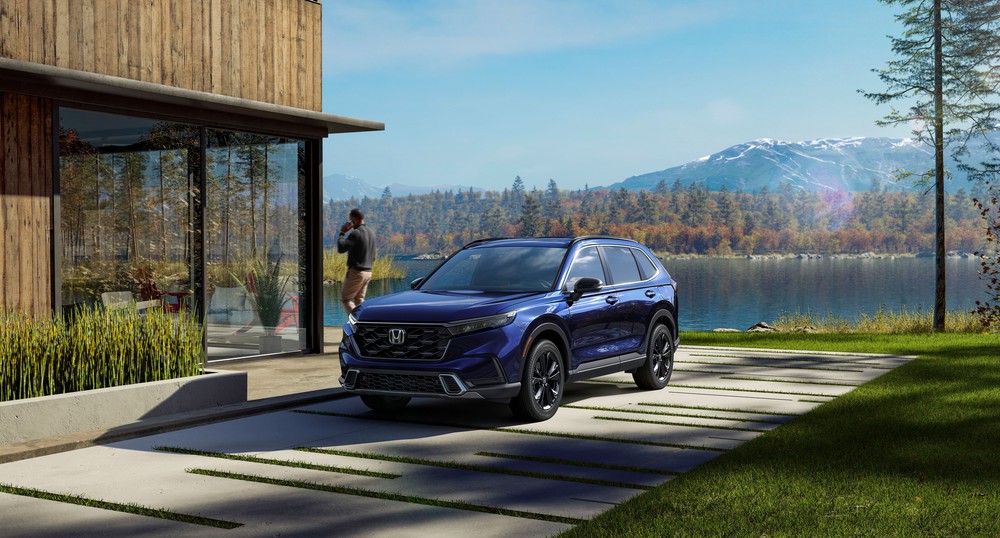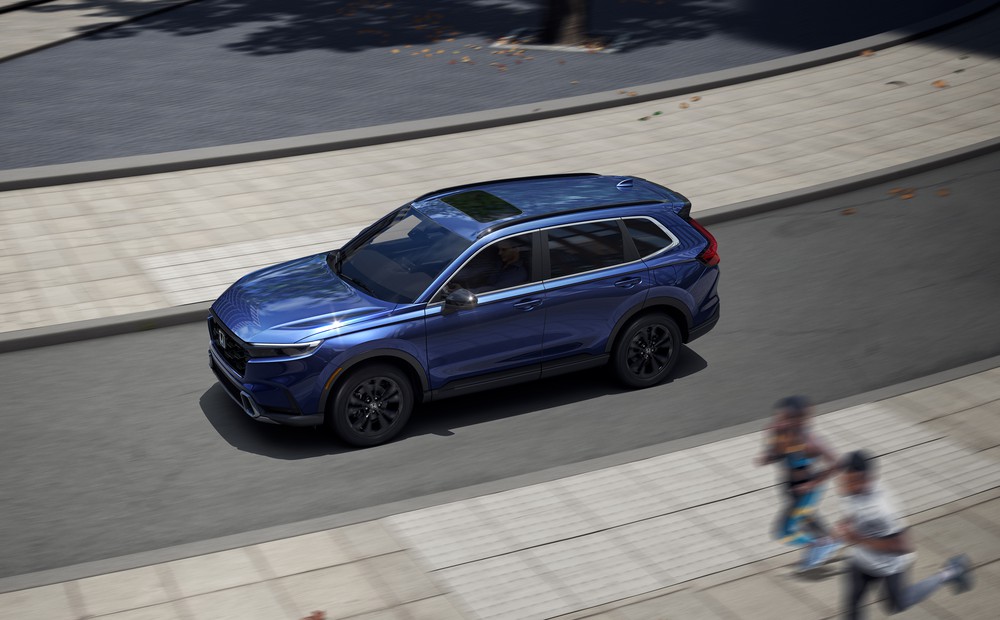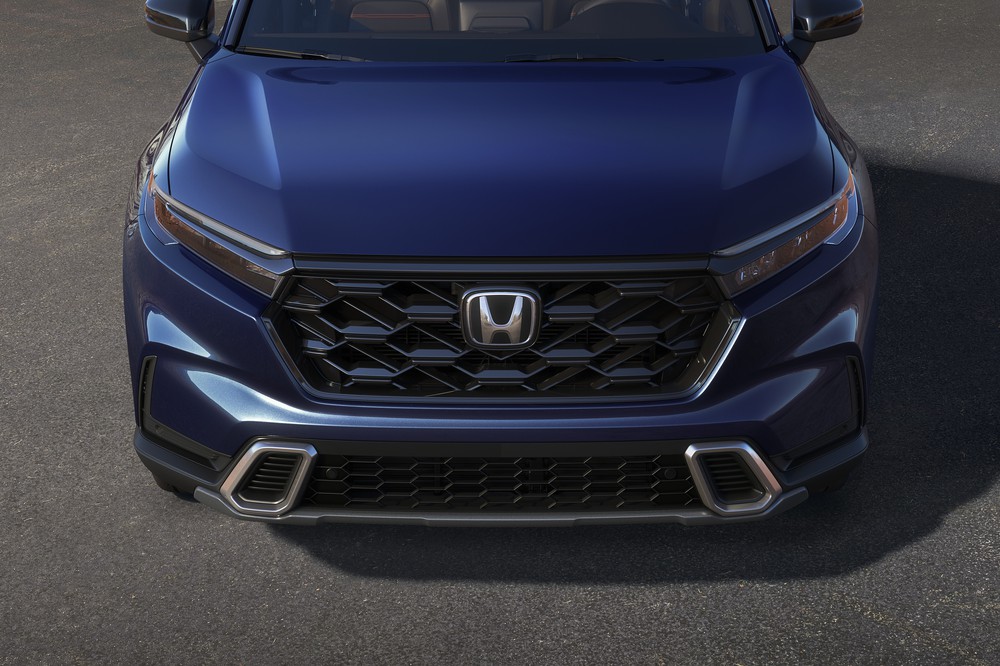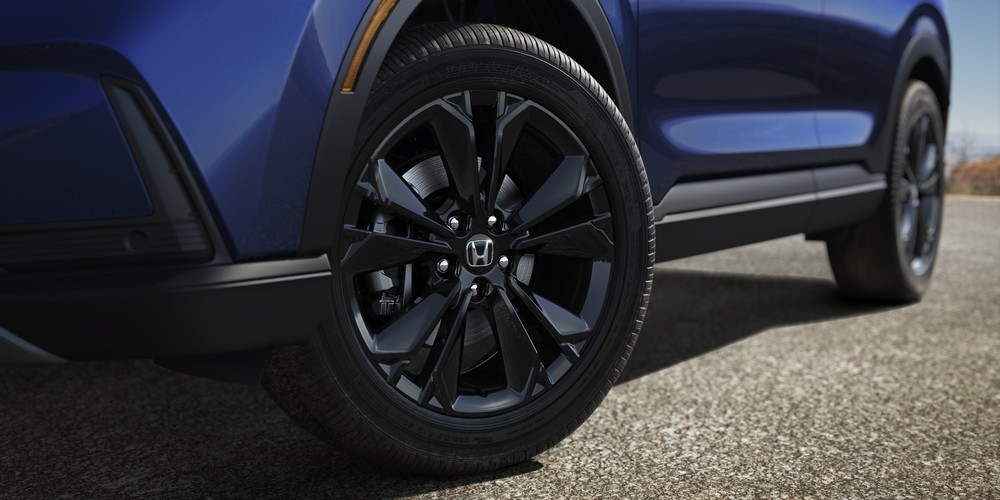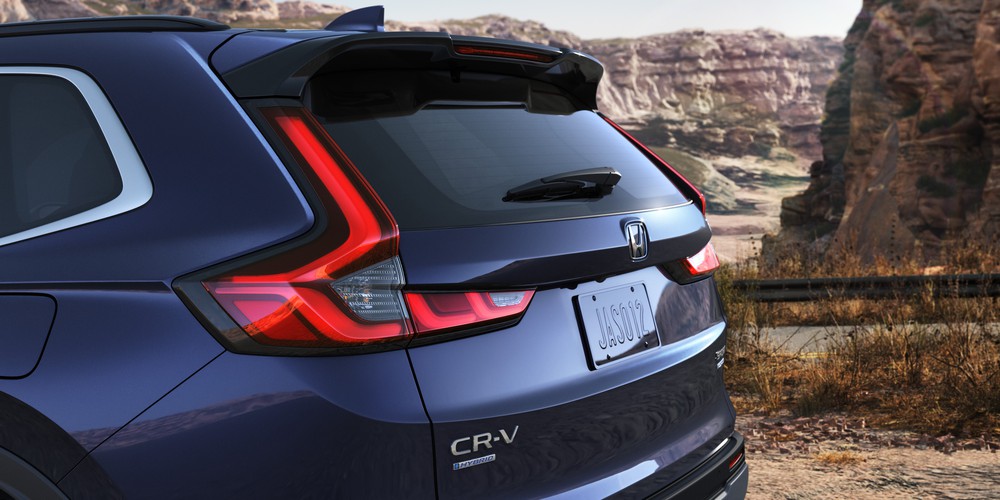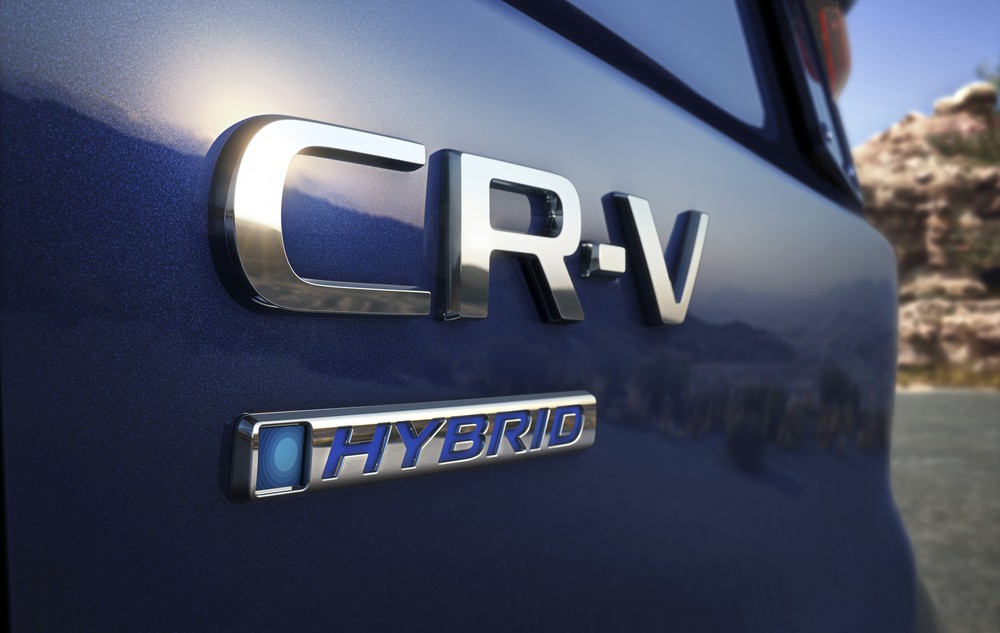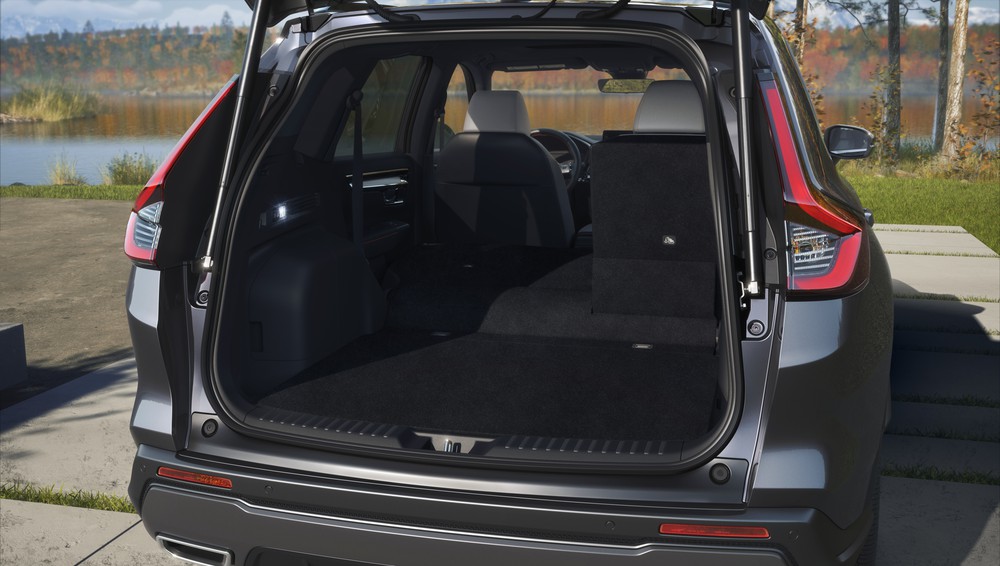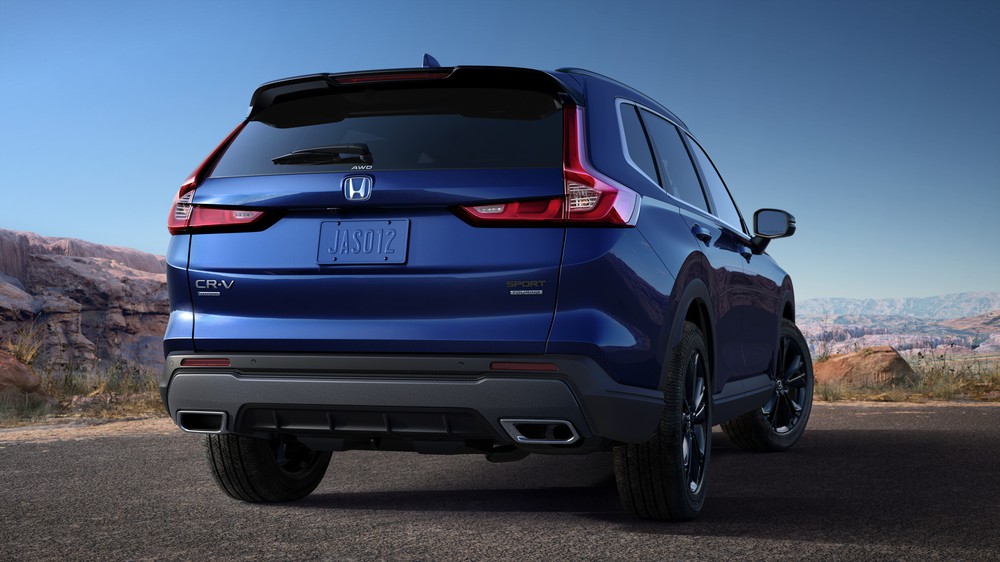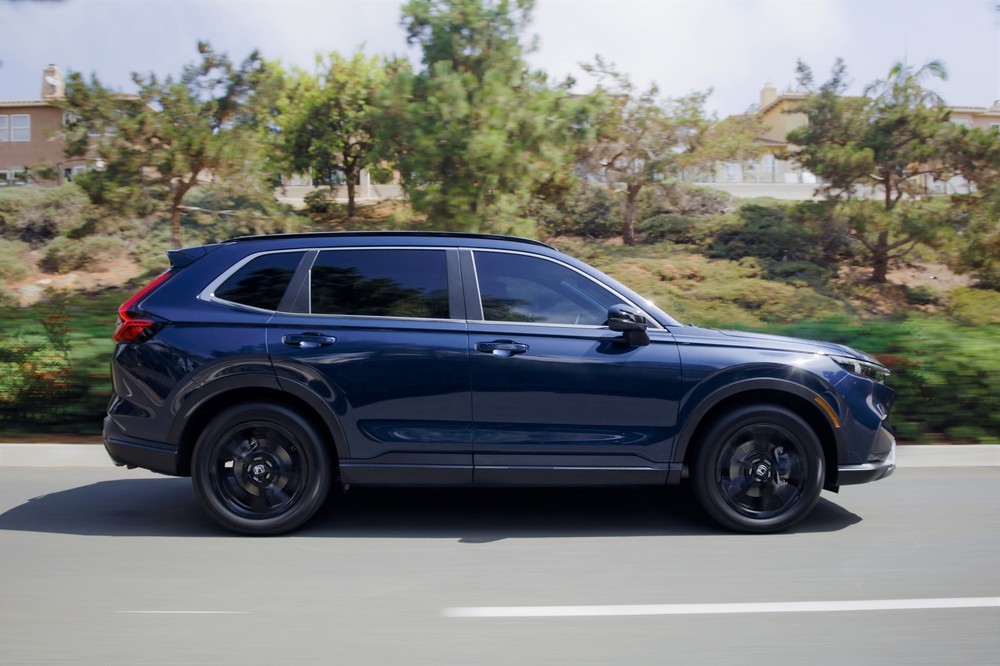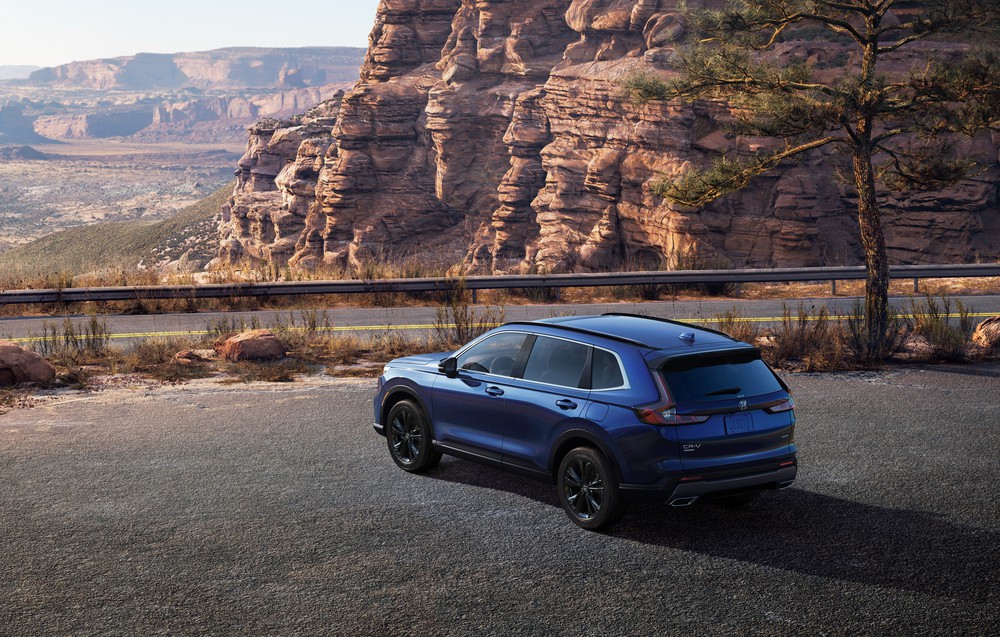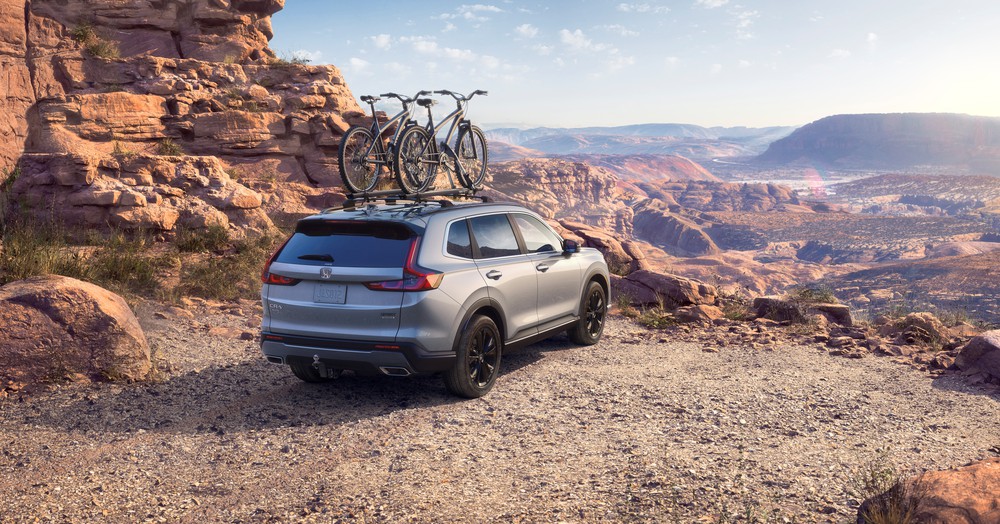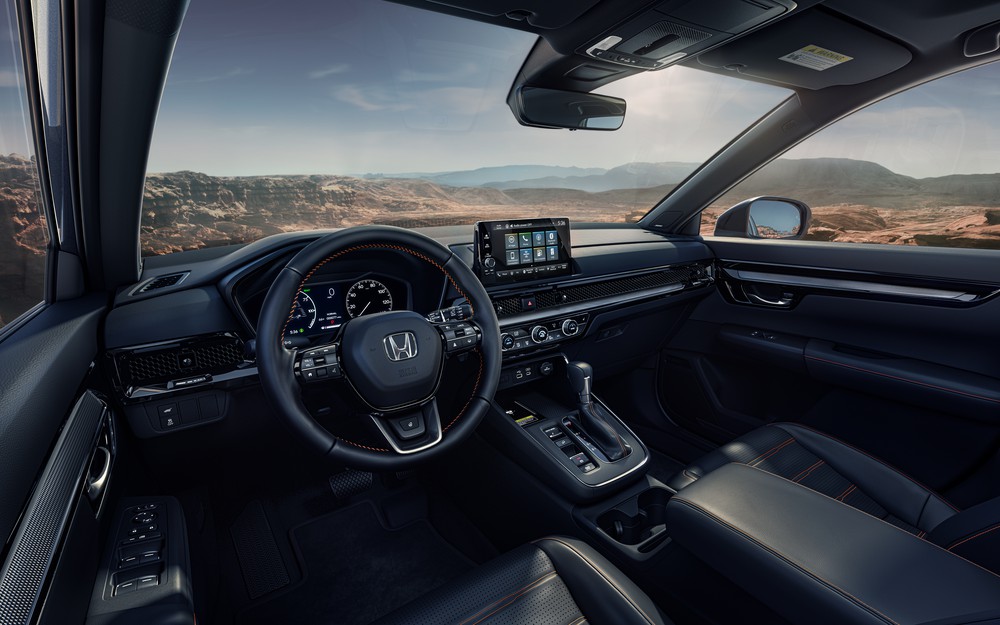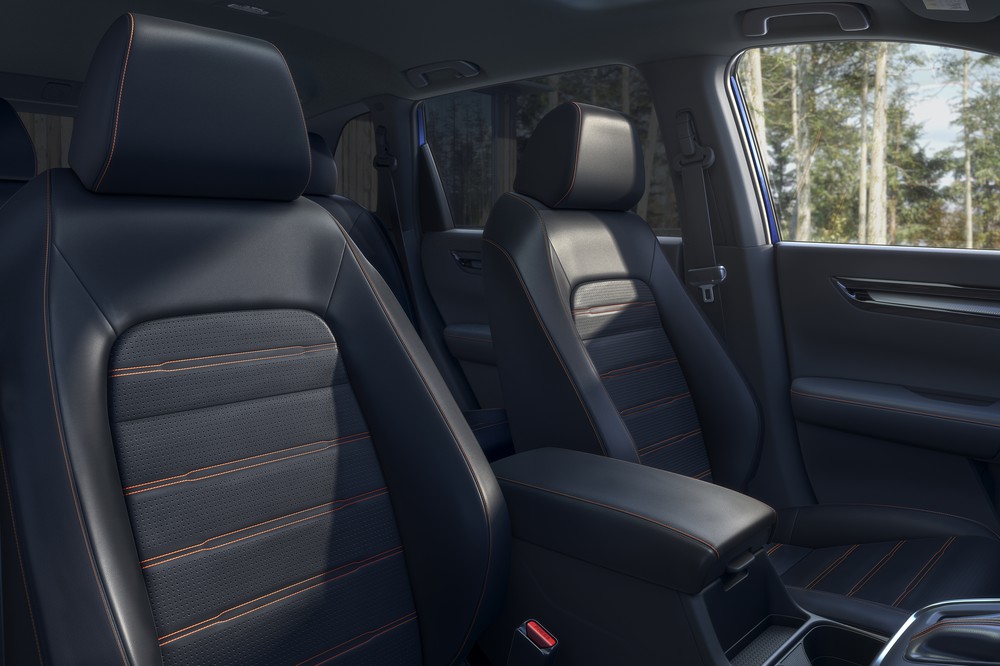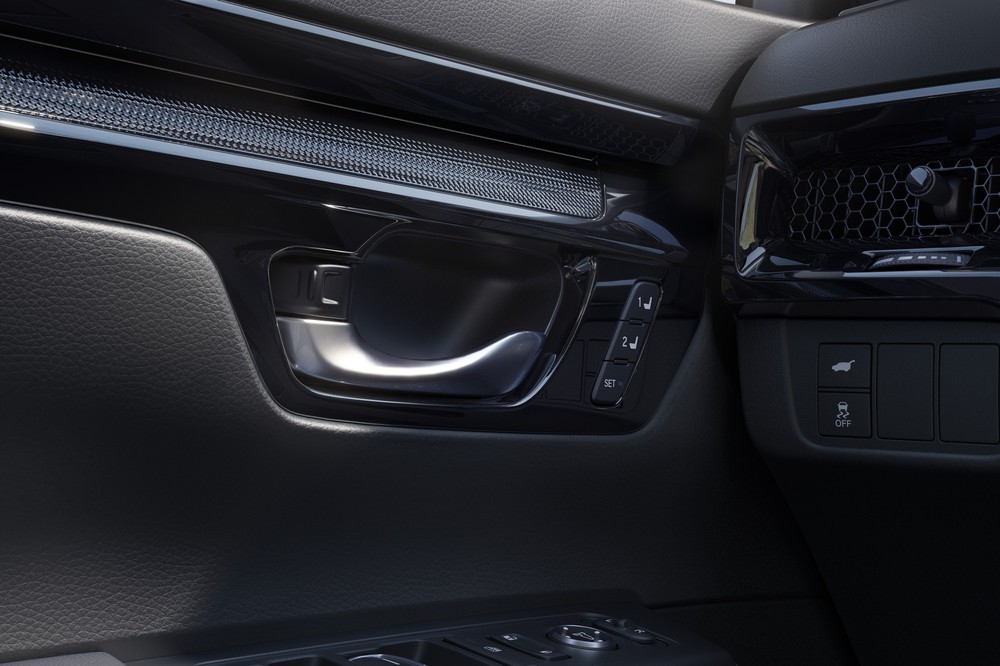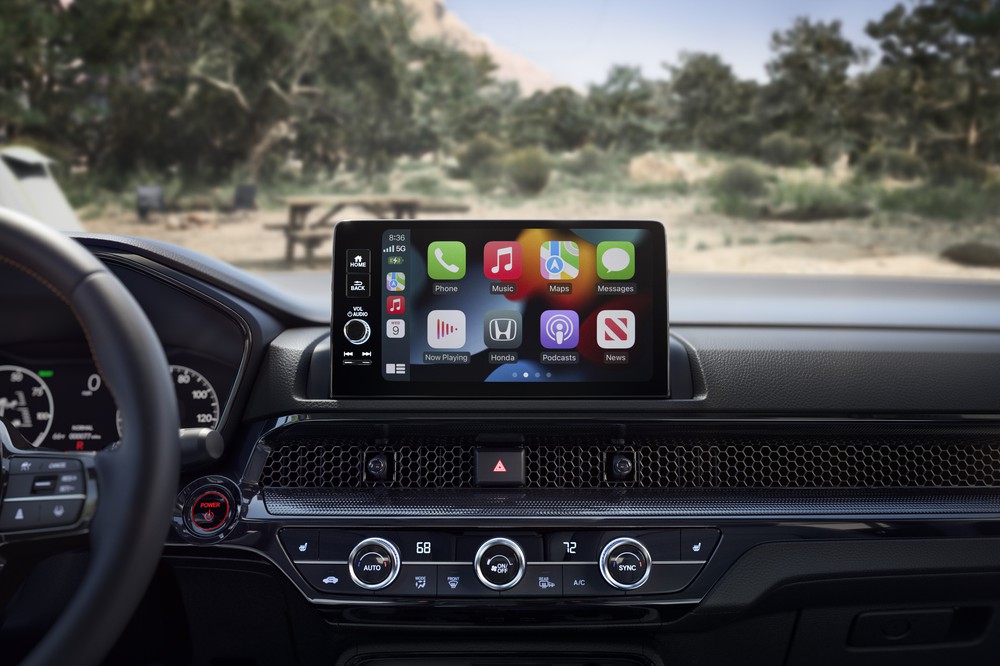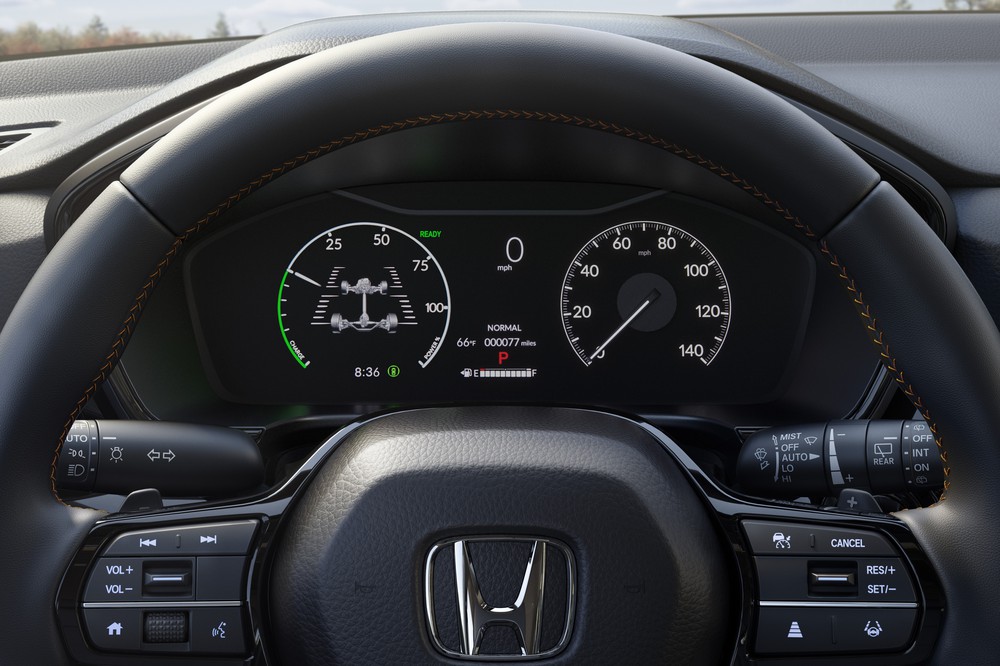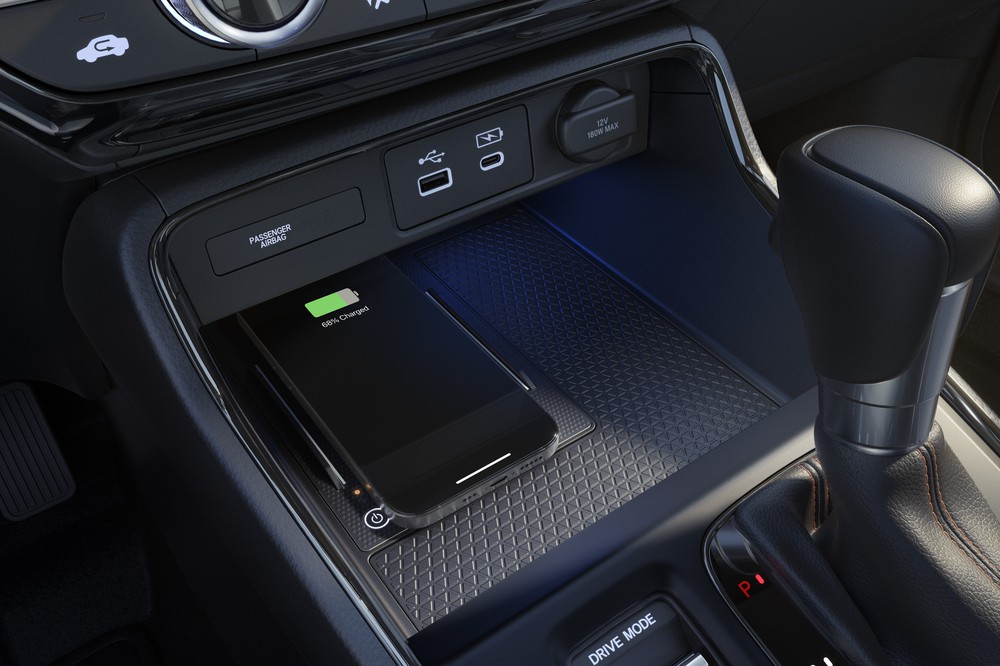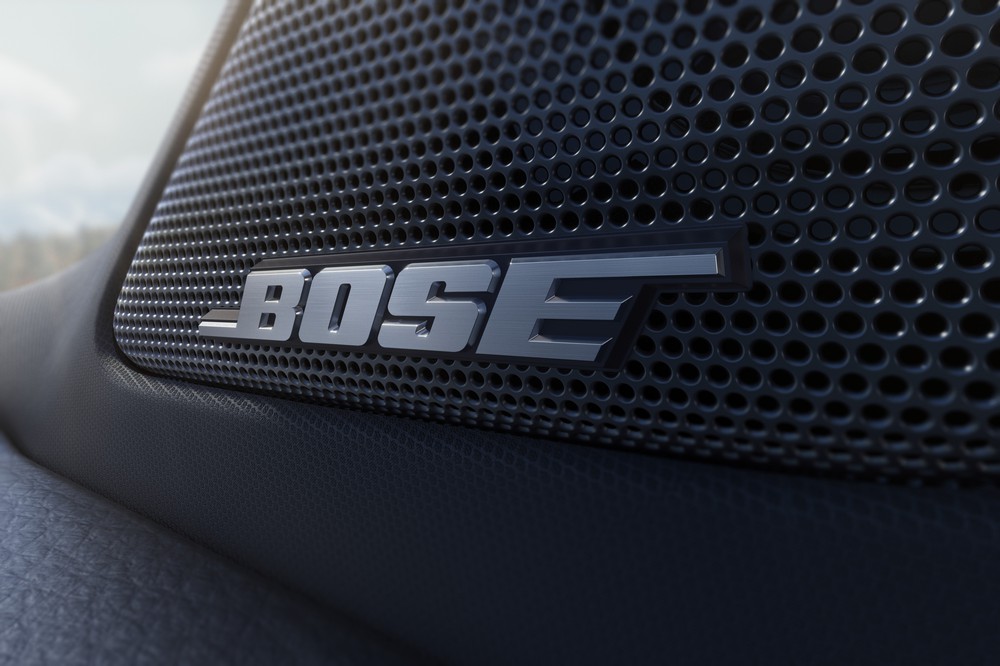2023 Honda CR-V Overview
The popular Honda CR-V compact SUV is back for 2023 with an all-new model. Entering its sixth generation since 1995, it features new styling and larger dimensions. In 2022, the CR-V was the second bestselling SUV and seventh bestselling vehicle overall in the United States. Can the latest improvements push the model even closer to the top?
Dare to Compare: How the CR-V stacks up to the competition
Trim levels and price
The 2023 Honda CR-V is offered at five trim levels. The following are their starting MSRP.
- LX: $29,655
- EX: $32,855
- Sport Hybrid: $34,195
- EX-L: $35,505
- Sport Touring Hybrid: $40,345
All of these figures include a mandatory destination charge of $1,245. This puts the CR-V on the pricier end of the range compared to its main rivals, such as the Subaru Forester, Mazda CX-5, Toyota RAV4, Nissan Rogue, Kia Sportage, and Hyundai Tuscon, which all have a lower starting cost. That said, this is the most competitive segment in the market and Honda hopes to entice you to the CR-V with a wide range of standard features.
Engines and performance

Under the hood of the LX, EX, and EX-L is a turbocharged 1.5-liter four-cylinder rated at 190 horsepower and 179 lb-ft of torque. It sends power to the front wheels via a continuously variable automatic transmission, with all-wheel drive offered as a $1,500 option. With this engine, the CR-V can only tow up to 1,500 pounds, which is low for the segment. According to Car and Driver, it accelerates from 0-60 mph in about 7.9 seconds, a respectably quick time. Fuel economy is an EPA-estimated 28 miles per gallon in the city and 34 mpg on the highway (FWD) or 27/32 mpg city/highway (AWD).
So far, all figures are identical to the 2022 model. The hybrid variants did receive a few tweaks, but they’re not particularly good. While the previous CR-V Hybrid used two electric motors and came with standard AWD, the new CR-V Sport Hybrid and Sport Touring Hybrid combine a 2.0-liter four-cylinder engine with just a single electric motor, sending 204 total system hp — 10 less than before — to the front wheels only.
Honda says torque is improved, but hasn’t specified by how much. The upside of losing standard AWD is that for those people who didn’t need it, they can enjoy better fuel economy: 43/36 mpg city/highway, compared to 40/35 mpg for the 2022 model. But losing standard AWD also means having to pay an extra $1,500 to get it back, and when you do, the fuel economy actually gets worse than it was before: 40/34 mpg.
One notable novelty is Hill Descent Control. It’s new to the CR-V and standard on all grades. On steep downward slopes, the system handles the throttle, brakes, and transmission, moving the CR-V forward at just 2-12 mph while you take care of steering. And thanks to a new architecture, stiffer body shell, and reworked suspension, the CR-V’s ride and handling is simultaneously more comfortable and more dynamic than before.
Practicality and exterior design
The 2023 Honda CR-V is 2.7 inches longer and 0.4 inches wider than the outgoing model, which translates to slightly more interior space. The second-row seats now have 0.6 inches of additional legroom, adding up to 40 inches, and those seats can be reclined up to 10.5 degrees for enhanced comfort. Outward visibility is also improved courtesy of redesigned A-pillars that Honda moved 4.7 inches further back, 2.8 to the side, and 1.4 inches down. Along with new door-mounted side mirrors and a larger greenhouse, drivers should have an easier time keeping tabs on their surroundings, even without relying on Honda’s many standard driver-assistance features.
The exterior redesign is a big standout for the CR-V. It has a completely new grille, standard LED headlights, signature vertical LED taillights, longer hood and sleeker roofline, and more rugged styling overall. The windshield wipers tuck themselves under the hood when not in use, contributing to a cleaner look. EX and EX-L models get a piano black grille mesh with chrome trim as well as standard 18-inch wheels. These become 19-inchers on the Sport Touring. Fender flares, running boards, and a liftgate spoiler are all optional.
Cargo space, like passenger space, is generous. You get 39.3 cubic feet of space behind the rear seats, which expands to 76.5 cubic feet when folding those seats flat. That puts the CR-V at the top of the segment. And the low cargo floor makes loading even heavy items quite easy.
Interior comfort and features
Arguably the best thing about Honda cars are the seats. At some point in history, the company’s engineers seem to have perfected the art of ergonomics, and other manufacturers have somehow not quite caught on. The 2023 CR-V continues that trend with new “body stabilizing seats” that partially negate movement from g forces and use all sorts of internal structures to better support your body. Eight-way power adjustability is standard, and Honda also tweaked the steering wheel angle from 28 to 25 degrees, which it says should reduce driving fatigue. It’s all in the little details.
The first thing you’ll notice in the CR-V’s cabin is probably the honeycomb mesh design that bisects the dashboard, giving the compact SUV genuine premium appeal. The CR-V EX offers the best value by adding leather surfaces, heated seats, dual-zone automatic climate control, a leather-wrapped shifter knob and steering wheel, and piano black dash trim. The Sport adds orange contrast stitching and black headliner, the EX-L adds leather seats with memory settings, and the Sport Touring model gets even more unique design elements and finishes, like silver window switch trim, along with a heated steering wheel.
Throughout the CR-V’s interior, you’ll find a variety of storage cubbies, including the largest center console bin in the class at nine liters. There are eight cup holders in total as well as a storage tray ahead of the shifter that Honda says can hold two smartphones side by side.
Infotainment and safety technologies
The 2023 Honda CR-V comes with the expected assortment of standard technology features such as a 7-inch touch screen, 7-inch digital instrument display, and Apple CarPlay and Android Auto smartphone compatibility. The EX-L and Sport Touring models get a larger 9-inch touch screen with wireless CarPlay and Android Auto integration, wireless smartphone charging, and Wi-Fi hotspot. Every model gets at least two USB ports — one A and one C — while the Sport and Sport Touring get two additional USB-C ports in the second row.
Audio systems include a four-speaker unit at the lowest trim level, 6-speaker system on the EX and Sport, 8-speaker system on the EX-L, and new 12-inch BOSE premium sound system on the Sport Touring. The navigation system, included on Sport and Sport Touring models, is enhanced compared to 2022, but it would be hard to justify using any carmaker’s nav system over the ones developed by Google and Apple. The screen options are small relative to the competition — some of the CR-V’s rivals have 12-inch displays.
That said, one area where the CR-V is consistently ahead is safety. The 2023 model has an improved body structure optimized for oblique collisions, a wide host of new airbags that better protect the head and knees, and significantly updated Honda Sensing technologies. With a new front sensor camera and radar, among other enhancements, the CR-V is now better at seeing vehicles, pedestrians, bicyclists, motorcycles, road signs, and road boundaries. New for 2023, it offers limited autonomous driving ability in traffic jams between speeds of 0-45 mph. Also new: a rear seat reminder system is standard at all trim levels.
Conclusion
The 2023 Honda CR-V is a solid entry to this year’s compact SUV segment, albeit a slightly underwhelming one for a new-generation model. Normally, the very first model in a new generation represents a big leap forward, one that might put the competition on the back foot, but the CR-V is more like…a modest stride ahead of the 2022 model.
Its strengths and weaknesses are the same as they were before. The interior is spacious, comfortable, and well put-together, and the safety features are comprehensive, but that was already the case — now just more so. The powertrain is competent but not as fun as what you’d get from a Mazda CX-5 or as efficient as a Kia Sportage Hybrid (though it did get closer to the latter). The infotainment features are significantly improved over the 2022 model, but those were in dire need of an update to begin with. Now they’re just over par.
To give Honda credit, the sixth-generation CR-V does have lots of “invisible” upgrades like its new architecture and enhanced sensor array. On the outside, it may not have much to show besides new styling and some extra tech, but with the changes under the hood, the CR-V is well positioned to continue improving and maintain its dominance in the compact SUV segment for the coming years.
Kurt Verlin was born in France and lives in the United States. Throughout his life he was always told French was the language of romance, but it was English he fell in love with. He likes cats, music, cars, 30 Rock, Formula 1, and pretending to be a race car driver in simulators; but most of all, he just likes to write about it all. See more articles by Kurt.


